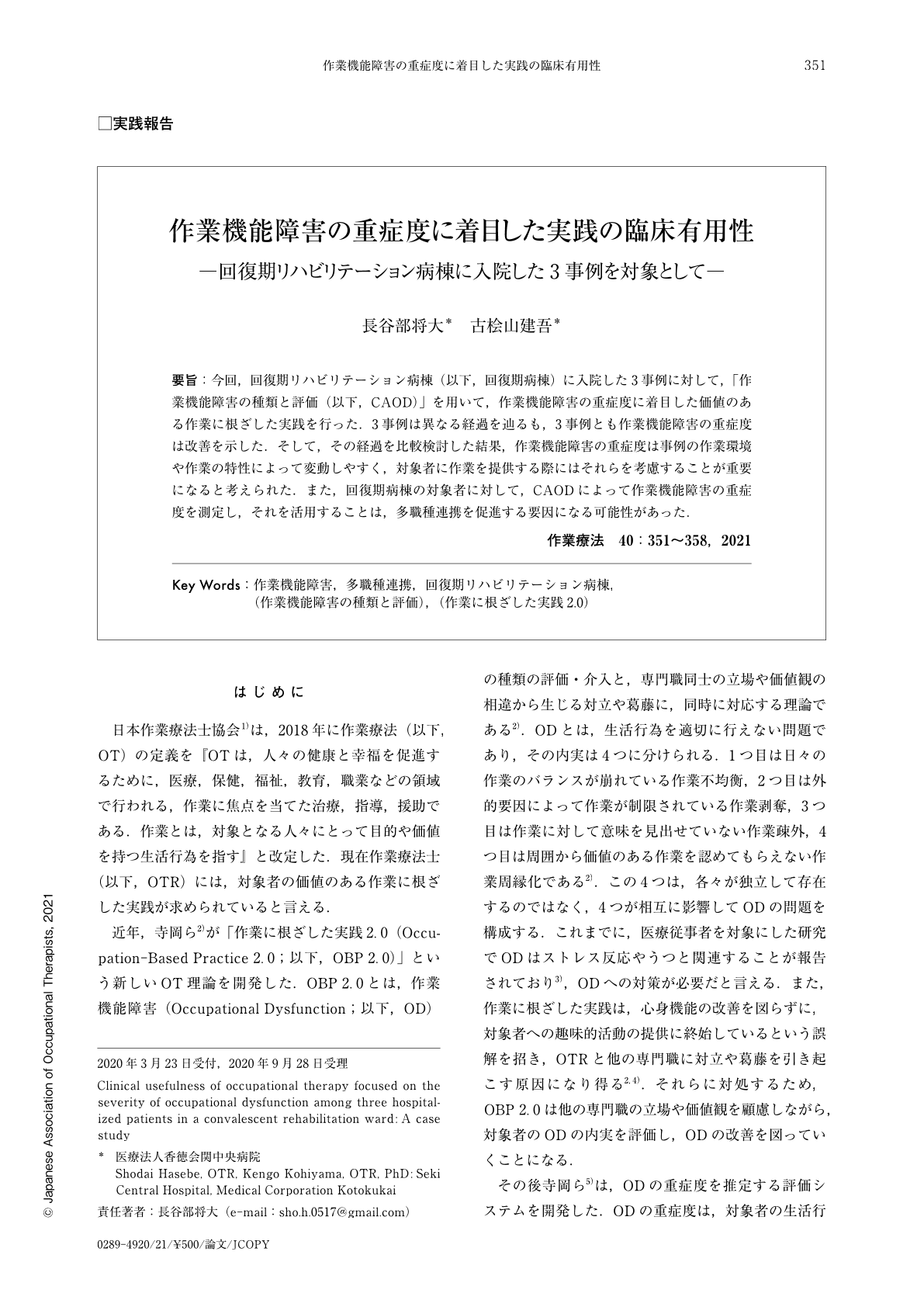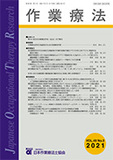Japanese
English
- 販売していません
- Abstract 文献概要
- 1ページ目 Look Inside
- 参考文献 Reference
- サイト内被引用 Cited by
要旨:今回,回復期リハビリテーション病棟(以下,回復期病棟)に入院した3事例に対して,「作業機能障害の種類と評価(以下,CAOD)」を用いて,作業機能障害の重症度に着目した価値のある作業に根ざした実践を行った.3事例は異なる経過を辿るも,3事例とも作業機能障害の重症度は改善を示した.そして,その経過を比較検討した結果,作業機能障害の重症度は事例の作業環境や作業の特性によって変動しやすく,対象者に作業を提供する際にはそれらを考慮することが重要になると考えられた.また,回復期病棟の対象者に対して,CAODによって作業機能障害の重症度を測定し,それを活用することは,多職種連携を促進する要因になる可能性があった.
This study investigated valuable occupation-based practice for three cases in a convalescent rehabilitation ward. We focused on the severity of occupational dysfunction using Classification and Assessment of Occupational Dysfunction (CAOD). Although the three cases had different courses, the severity of occupational dysfunction was reduced in all cases. Comparing the progress of the three cases indicated that the severity of occupational dysfunction tends to fluctuate according to both the occupational environment and characteristics. Therefore, it is important to consider those factors when providing occupations for the subjects. In addition, our findings suggest that estimating the severity of occupational dysfunction using CAOD for clients in a convalescent rehabilitation ward and utilizing those outcomes may encourage interprofessional cooperation.

Copyright © 2021, Japanese Association of Occupational Therapists. All rights reserved.


